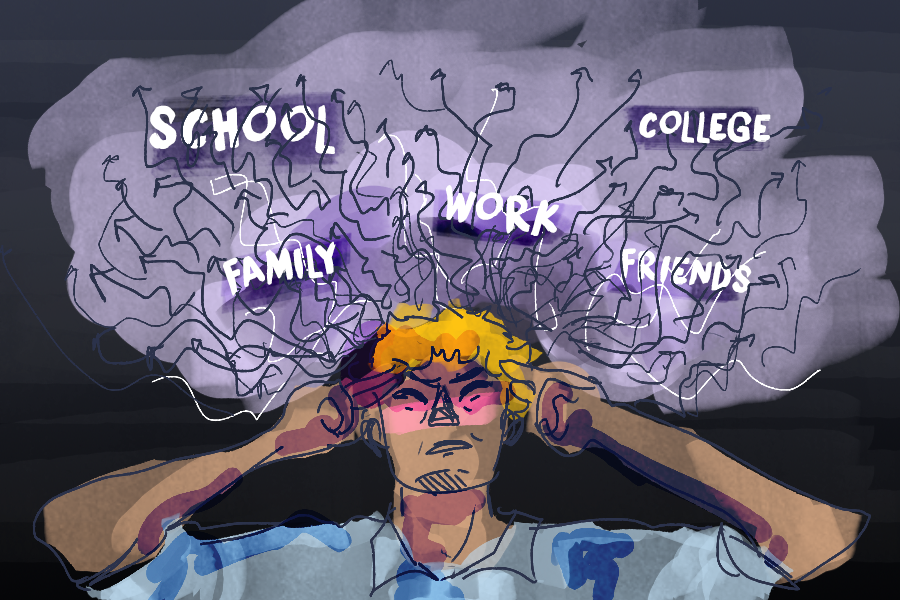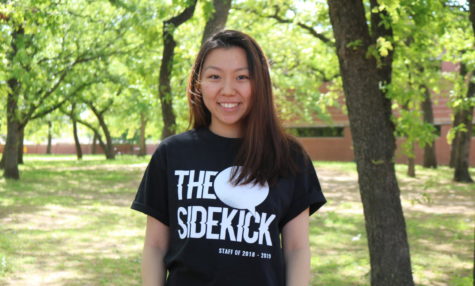Why students are more pressured than ever
Today, students are more stressed than ever, with The American Psychological Association’s Stress in America survey finding 30 percent of teens reported feeling sad or depressed because of stress and 31 percent felt overwhelmed. The rigor of schoolwork, along with toxicity across social media, relationships and academic competition all end up supporting a fatal backbone of a culture full of negativity.
January 14, 2019
According to the American Society for the Positive Care of Children, more teenagers and young adults die from suicide than from cancer, heart disease, AIDS, birth defects, stroke, pneumonia, influenza and chronic lung disease combined.
This may seem shocking to some, but unfortunately, to an average high schooler, this may sound normal. The American Psychological Association’s Stress in America survey found that 30 percent of teens reported feeling sad or depressed because of stress and 31 percent felt overwhelmed.
“It’s hard to focus on one thing at a time because you’re trying to do so many different things in such little time,” Coppell High School junior Sreeya Reddy said. “It’s definitely a lot of stress and pressure to constantly compete with your peers.”
The rigor of schoolwork, along with toxicity across social media, relationships and academic competition all end up supporting a fatal backbone of a culture full of negativity. Practices such as academic dishonesty thrive among students who follow this culture, creating an even larger disconnect between fellow classmates and enforcing a high-pressure environment at all times.
“Cheating definitely affects students because it doesn’t feel like a fair competition anymore,” CHS junior Willy MacCluskey said. “The rank system also doesn’t really help because we’re all put against each other to get into that top 10 percent.”
In situations such as these, not only does negativity linger – it thrives. Both in and out of school, unique factors play roles in maintaining this high-stress mindset – some components of this issue being more subtle than others.
Bullying also plays a significant role in rising rates of stress among teens. Fellow teenagers are the ones both cultivating and resenting it simultaneously. Whether this means actively participating or simply watching from the sidelines, many teens choose to stay quiet. In fact, 90 percent of teens who have seen social-media bullying say they have ignored it.
A single factor cannot be put to blame, as every piece of this widespread issue has significantly affected people within schools. However, it is evident the common acceptance of negativity has created an unhealthy environment for everyone in schools, especially students and teachers.
According to the Johns Hopkins Student Assistance Program, anxiety and depression can negatively impact a student’s academics, relationships and workplace.
“Apart from the fact everybody likes to joke about being depressed, there are a lot of people who are actually depressed because of school,” Reddy said. “There are so many social pressures from other students that make kids feel like they’re not good enough.”
Delegating teachers to completely flip the current agenda to an optimistic perspective is also no easy task, especially considering everyone’s unique circumstances. One teacher at CHS has found her own ways to alleviate this issue.
CHS IB English teacher Stephanie Ball is known among her students for incorporating an annual “therapy session” into her class. It was created a few years ago after her overworked juniors inspired her to create an open environment for students to vent, complain, or even celebrate their lives – all within the walls of an English classroom.
“Knowing what’s going on in my students’ lives is invaluable to me,” Ball said. “It helps me plan according to their situations, whether it has to do with family, school, or anything else going on.”
So how could negativity be removed from this generation’s culture? Can people simply begin to compliment their friends and call it a day? Studies show two major factors contributing to creating a more successful and positive environment is accepting “failure” and embracing vulnerability.
Accepting failure as it is is not easy. In fact, some students have often been conditioned throughout their educational careers that they must do anything they can to avoid it. Similarly, others have been raised this way by their parents, primarily in order to guarantee a more academically successful life.
Yet according to The Harvard Business Review article “The Failure-Tolerant Leader”, the key to creating innovative thinking is “viewing mistakes for the educational tools they are and as signposts on the road to success”. Likewise, according to WebPsychology article “Embracing Vulnerability”, learning to embrace vulnerability can establish and connect a purpose to an individual’s experiences, making them significantly more worthwhile, according to Brené Brown, PhD.
Now, states such as New York are requiring mental health education in schools. Similarly, school districts such as the Visalia Unified school district in California have adopted mental health campaigns to increase knowledge of the warning signs of suicide. Whatever the approach, many new policies are being implemented across the nation in order to better understand and alleviate the pressures of high school students.












Charlotte Vanyo • Jan 14, 2019 at 9:13 pm
I love your writing style. This was a really good story and an important topic to cover.